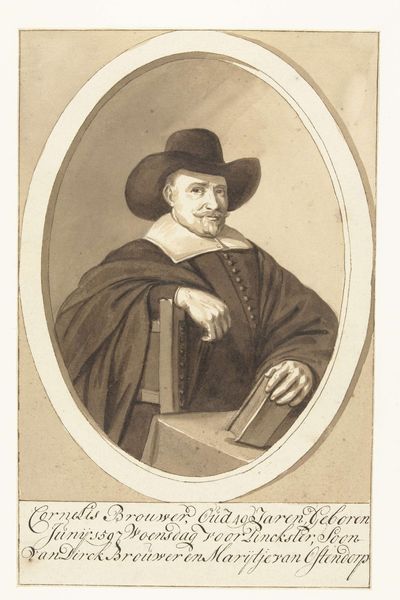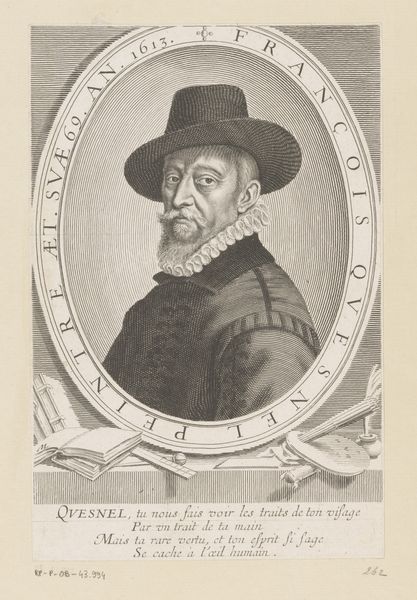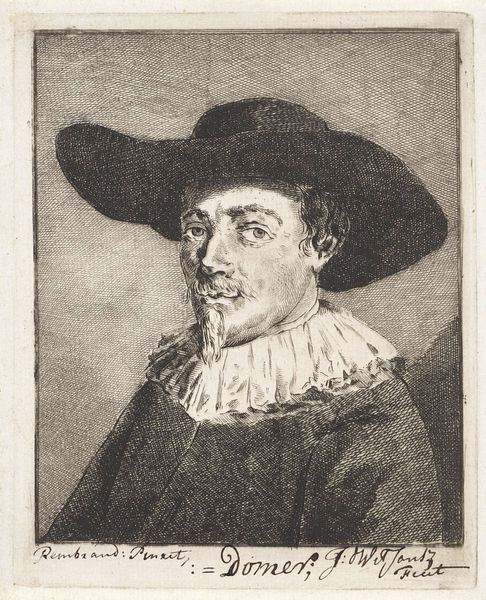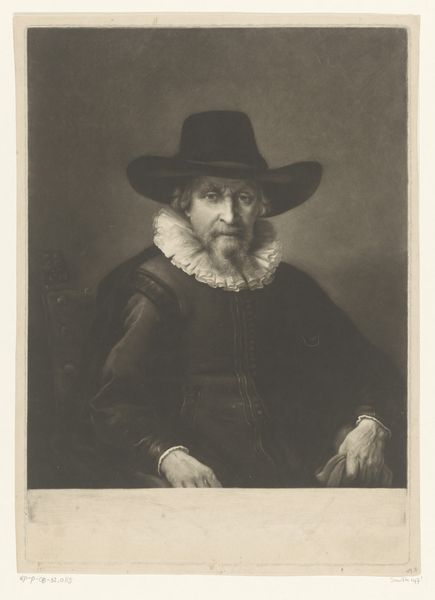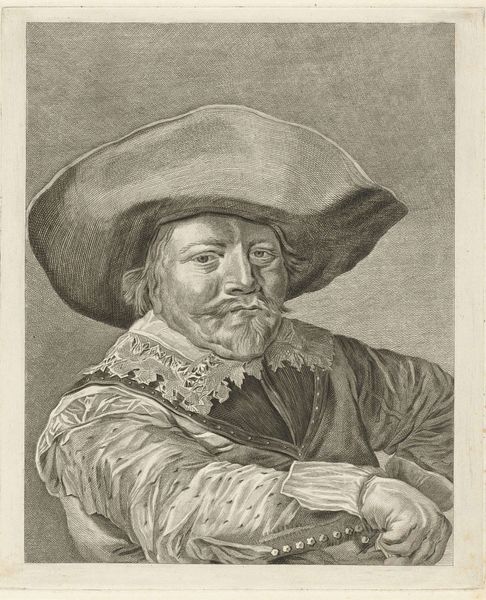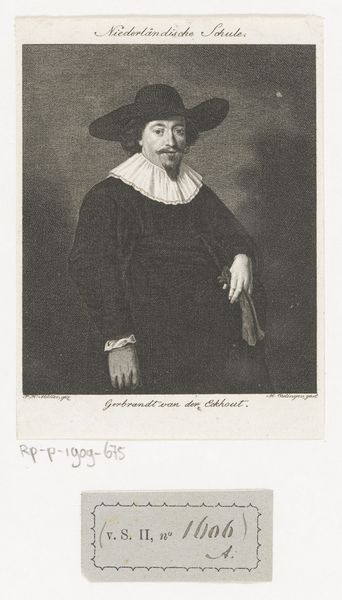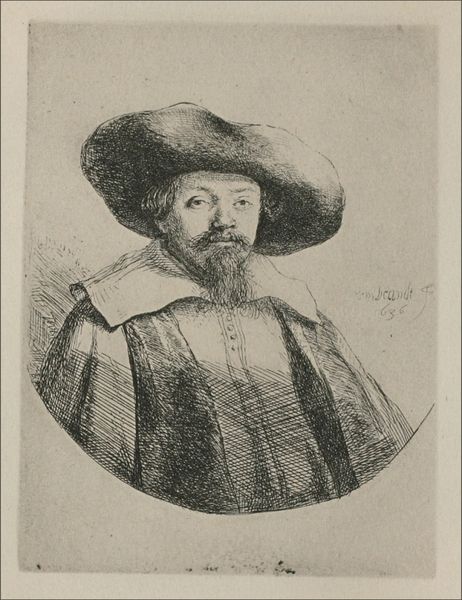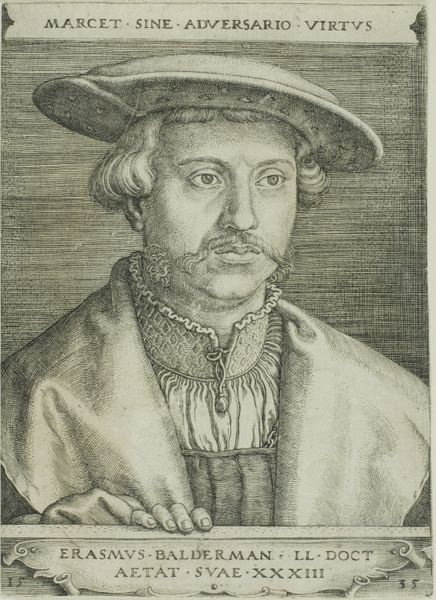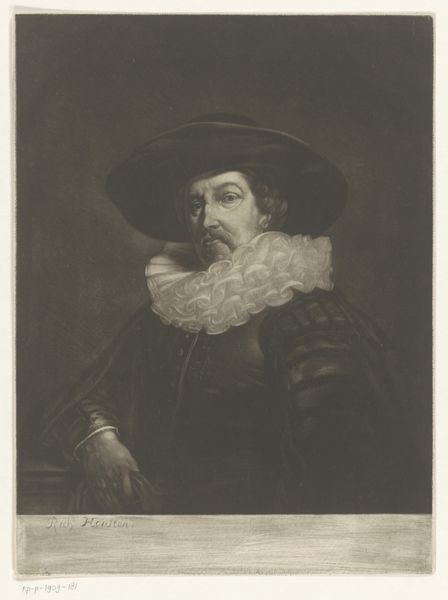
drawing, pencil
#
portrait
#
pencil drawn
#
drawing
#
neoclacissism
#
charcoal drawing
#
pencil drawing
#
pencil
#
portrait drawing
#
academic-art
Dimensions: height 242 mm, width 211 mm
Copyright: Rijks Museum: Open Domain
Curator: Let’s consider this drawing now; a compelling portrait of Aelbert Cuyper created by Jean Bernard. Although the precise year of execution is uncertain, the work originates sometime between 1775 and 1833. It’s currently housed here at the Rijksmuseum. Editor: It possesses such quiet dignity, doesn’t it? The monochrome palette lends a sense of gravitas. One can only speculate on the social standing of Aelbert Cuyper during his time. Curator: Indeed, note the careful attention to detail in rendering Cuyper’s likeness. Bernard employs a precise and controlled use of pencil to create subtle tonal variations, highlighting the subject’s features with incredible accuracy. Editor: The ruff collar, the hat – these are obviously signifiers. But what of Cuyper himself? Who was he, really, beyond the trappings of his apparent wealth? Was he engaged with the political or social currents of his day? And what of Bernard? Curator: These formal elements structure the portrait as a neoclassical celebration of individualism, wouldn’t you agree? The subtle gradation in tone serves not only to sculpt the face but also draws out what we may call the psychological dimensions, if perhaps restrained and certainly posed. Editor: The limitations of the portrait genre, surely? Bernard gives us a visual document shaped as much by convention as by his own hand. The drawing signifies both power and perhaps conformity to prevailing societal norms. We should also question portraiture, which often catered to the elite and preserved their images for posterity, isn't it implicitly a commentary on power and access? Curator: Regardless, the rendering itself—observe the way Bernard's meticulous use of pencil has yielded those complex tonal variations and remarkable depth of field! He elevates a simple medium like drawing. Editor: Indeed. And that technical prowess gives visual form to the complexities of representation, of class, of privilege. It is interesting to remember all the other lives of the unpictured, those deemed unworthy of artistic memorialization in a period of considerable social upheaval. Curator: Ultimately, an opportunity to observe the delicate interplay between artistic mastery and subject portrayal. Editor: Precisely. It encourages us to ask not just “who is this person?” but “what does it mean to have one’s image preserved while so many are forgotten?".
Comments
No comments
Be the first to comment and join the conversation on the ultimate creative platform.
